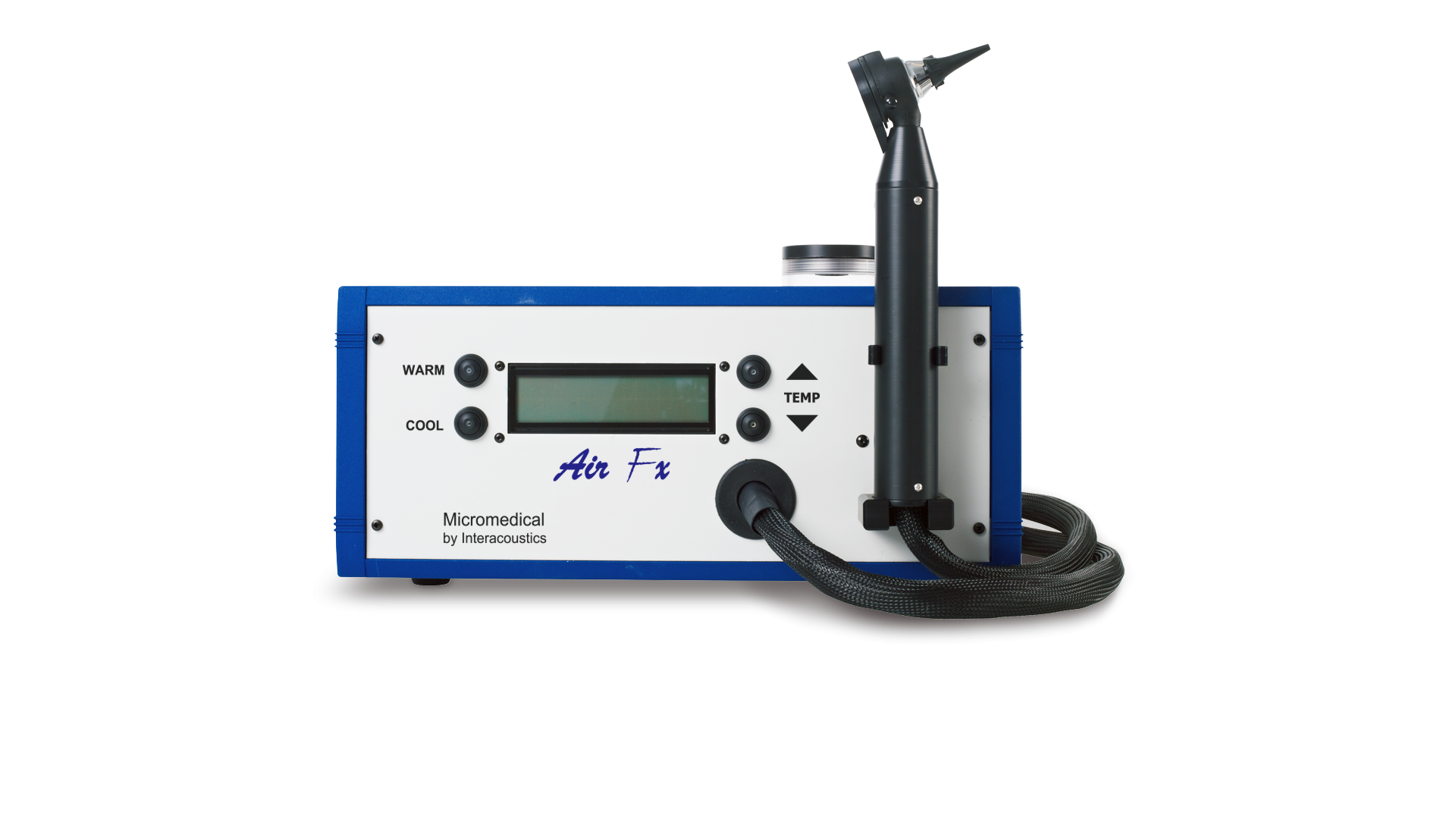
Micromedical by Interacoustics
Air Fx
Caloric testing using air
The Air Fx caloric irrigator stimulates the horizontal semicircular canal, which is located in the inner ear. It does so by delivering cool or warm air into the external ear canal. This helps to determine if patients with dizziness or balance disorders have a properly functioning inner ear.
Alternatively use Aqua Stim with Water.
Precise caloric stimulation
Air Fx delivers a precisely-controlled temperature and flow rate of cool or warm air. It delivers the stimulus by pumping cool or warm air into the external ear canal. Air calorics allow you to evaluate your patient's horizontal semicircular canals during caloric testing. Thus, Air Fx is an ideal tool when dealing with patients with a suspected vestibular disorder, which is often manifested by dizziness or jerk nystagmus.
Keep an eye out for eye movements
With Air Fx, you aim the air stream at the eardrum through your patient's external auditory canal. This creates a differential in ear temperatures, which causes a convection current in the ear being stimulated. Depending on the temperature of the stimulus, this either excites or inhibits the cupula, thus initiating the vestibular-ocular reflex (VOR), which causes caloric nystagmus. If you combine Air Fx with Interacoustics' VNG software, you can record and observe these side-to-side eye movements from the moment you start the caloric test.
Take good care of your patient
Before performing a caloric test, it is important to inspect your patient's ear canal, as perforations or similar disorders may impede the test. For this purpose, Air Fx includes an otoscope. The irrigator also features a bright white LED, which illuminates the tympanic membrane without obstructing the airflow or view of the tympanic membrane. Finally, Air Fx features a resistance temperature detector (RTD) temperature sensor at its speculum to ensure an accurate and stable air temperature.
The benefits of caloric testing
Caloric irrigation stimulates each vestibular end organ independently. As such, you can determine whether one end organ is weaker than the other or whether neither end organ is providing sufficient vestibular information to the brain. Thus, analyzing the response of each vestibular end organ allows you to assess the symmetry of the bilateral peripheral vestibular system.
How do you analyze the caloric test results?
Caloric stimulation can identify several abnormalities, such as unilateral weakness or directional preponderance present in asymmetrical caloric responses. The asymmetry is reflected by a difference in the amount of right-beating nystagmus compared with the amount of left-beating nystagmus. A bilateral weakness presents in symmetrical, but weak, caloric responses from both ears.
Need support or training?
Check out the latest training material for Air Fx.
Contact your local distributor
Our world-wide experts and distributors can help you find the best solution for you and your clinic. They also know what products are available in your market. Fill out the form and your local distributor will contact you with more information.
Distributors
Purchase from one of our trusted distributors.
Support
Need product training? Visit our training site to find answers.
